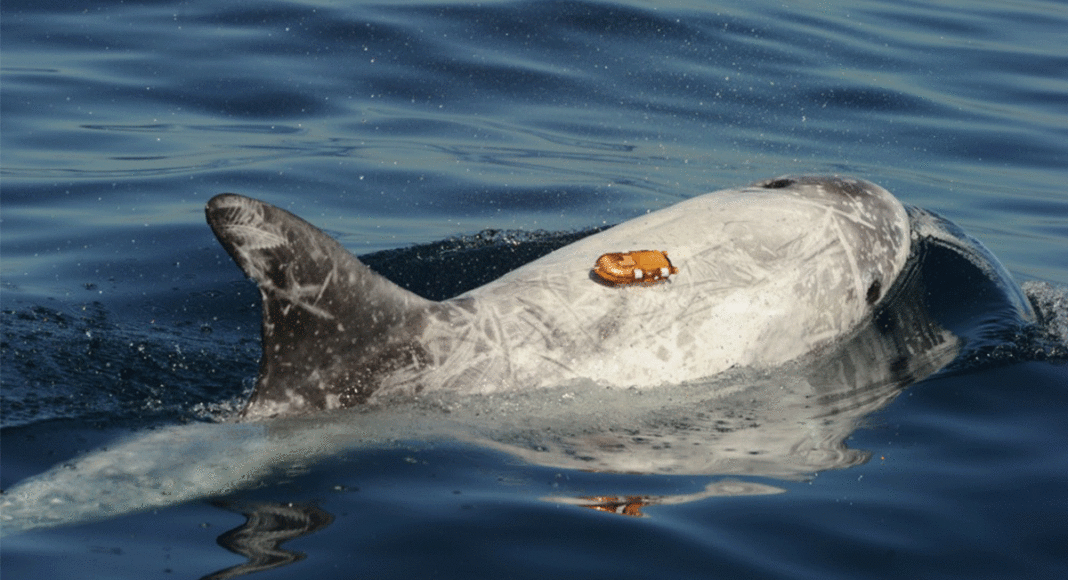Loud, underwater noises may be driving whales and dolphins in far-reaching directions, according to new research from UCSC scientists.
A new study suggests that such noises—the kind emitted by shipping, fishing and naval activity—could contribute to the animals ending up beached along the shore. Startling sounds drive many marine mammals to burn precious energy they could have otherwise used to forage, flee from danger and care for their young.
The study was led by UCSC animal physiologist Terrie Williams, who fit devices that track the number of fin beats—the marine equivalent of a step counter—to the streamlined bodies of bottlenose dolphins in captivity. Williams trained the dolphins to swim slow and fast, then measured the amount of oxygen they inhaled when surfacing.
Williams used those records to calculate the energy needed to power a single fin beat. She also used records of wild Cuvier’s beaked whales fleeing from sonar to estimate how much energy they used in their escape.
The findings revealed that bottlenose dolphins burn nearly twice as much energy when swimming quickly; for instance, when startled by a loud noise. The energy use of beaked whales, which are common in the outer portions of Monterey Bay, spikes 30 percent when fleeing, according to the new study.
Marine scientist Brandon Southall, who heads an environmental research group in Santa Cruz and supplied the figures on beaked whales, says marine mammals are uniquely susceptible to noise pollution because of their adventurous lifestyle as “the most extreme divers on the planet.” He notes that some marine mammals can dive a mile deep and stay submerged for more than two hours.
To accomplish such a feat, they must tightly manage their energy and limited oxygen supply. If they encounter a disturbance, it can overthrow that delicate balance.
Though Monterey Bay is free of shipping and navy vessels, noises from fishermen could contribute to the underwater cacophony, says Southall. Seal bombs—noisemakers used to deter seals from eating the day’s catch—are a likely contributor, he says.
Scientists at the Monterey Bay Aquarium Research Institute use underwater microphones to listen to Monterey Bay’s soundscape, and Southall says they detect thousands of seal bomb explosions each month. “It doesn’t seem like much,” he says, “but when there’s thousands of them, you hear them.”












